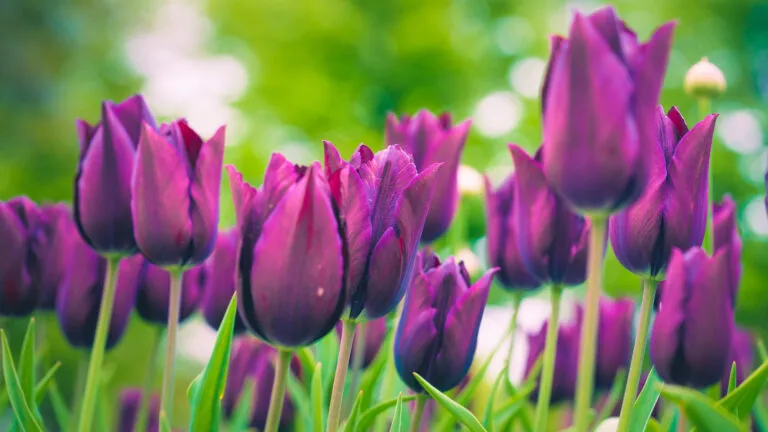Writer and photographer Julie Lavender has spent years taking pictures of nature’s wonders. In this gallery, she shares some of the lessons she’s learned from the flora and fauna she’s captured in her photographs.

Writer and photographer Julie Lavender has spent years taking pictures of nature’s wonders. In this gallery, she shares some of the lessons she’s learned from the flora and fauna she’s captured in her photographs.
Writer and photographer Julie Lavender has spent years taking pictures of nature’s wonders. In this gallery, she shares some of the lessons she’s learned from the flora and fauna she’s captured in her photographs.

Robberflies are fast-flying, beard-faced, six-legged predators that feed on other insects. Robberflies often successfully attack prey much larger than themselves. They pounce on insects resting or in flight, buzzing and tumbling to the ground with their prey. And their reward? A delicious meal of insect insides.
The robberfly reminds me that I am capable of facing giants and giant situations that are bigger than I am. I may tumble a time or two, but with persistence, I can succeed.

The painted lady butterfly has one of the longest known butterfly migrations, according to sciencenews.org. Found in many locations around the world, the painted lady butterflies that live in southern Europe migrate all the way to Africa in the fall, a distance of almost seven thousand, five hundred miles!
The painted lady butterfly reminds me that every journey begins with a flap of the wings, that first step. It may be a long journey, but with determination, I’ll get there.

The feathers of an anhinga differ from fellow water birds like ducks or geese. They also lack the oils of other water fowl. Without oil and uniquely shaped, the anhinga’s feathers can become waterlogged, allowing the bird to dive deep and stay submerged to search for dinner.
When not fishing, the anhinga perches in the sunshine, drying its outstretched wings in preparation for flight.
The anhinga teaches me that I’m created perfectly to handle my tasks and life’s purpose. I may be different from my contemporaries, but that just confirms that we’re all unique in some way!

Over time and with repetition, even something as soft as water can carve out the rock layers underneath the waterfall and form deep canyons.
Sometimes great things take time and persistence!

A skink has the capability to ‘drop,’ or break off part of its tail when attacked by predators. The still-wiggling tail distracts the predator and the tail-less skink escapes. Eventually, the skink’s tail grows back, though it sometimes struggles with balance issues while tail-less.
The skink teaches me that troubles that wound me in life don’t have to get the better of me. I can cast that off, rejuvenate, and move on to bigger and better things….leaving my tormentors staring at my tail in confusion!

Chipmunks enjoy a buffet of food sources, like seeds, grains, nuts, berries, mushrooms, insects, small frogs and lizards, and sometimes bird eggs. The adorable rodent, however, has an equally-long list of predators!
I think what I can learn from the chipmunk is two-fold. I can and should broaden my likes – try new things, enjoy lots about life. And secondly, to recognize my mortality. I need to live life to the fullest because I never know when that tasty acorn could be my last!

Spanish moss grows on trees, but is not harmful to the tree. The plant is a misnomer – it’s neither Spanish nor in the moss family. Also erroneous is the commonly-held belief that chiggers live and thrive in tree-suspended Spanish moss. More accurately, chiggers may inhabit the plant after it falls to the ground.
Spanish moss that often adorns trees in the southeastern United States remind me that I don’t have to live up to erroneous names or untruths about me. I can flourish and fulfill my purpose with excellence despite what others may say!

The golden orb weaver crafts a web with shimmering yellow silk that glistens in the sun, attracting insects, large and small. The snare that ends the life of many an insect is constructed with beautiful gold threads.
The lesson I glean from the golden orb weaver is that not everything that glitters is good for me. Sometimes, the pretty things in life can be a trap to ensnare me.

To avoid predators, the narrowmouth toad burrows in the ground, seeks cover, roams at night, can flatten its body to squeeze into tight places or secretes an offensive mucus.
The narrowmouth toad’s long list of defenses teaches me that I should find every way possible to avoid negativity, to make every available effort to avoid it and to be prepared to counteract it.

A troublesome weed, the thistle often causes great intestinal damage to grazing cattle. The spiny and prickly stems and flower heads irritates the skin of humans that encounter them, too. Many insects thrive on the nectar of the thistle plant, however, and goldfinches love thistle seeds.
Prickly thistle weeds remind me that all of us, despite faults or failings, have the potential for good!
See more of Julie’s work at julielavender.blogspot.com.

A health scare helped the Today show’s weatherman and cohost recognize—and give thanks for—his many blessings.

An in-depth look at the five colors plucked from God’s rainbow that usher us through this important time of spiritual renewal and growth.

The brilliant storyteller and editor helped create the Guideposts voice we know and love today.